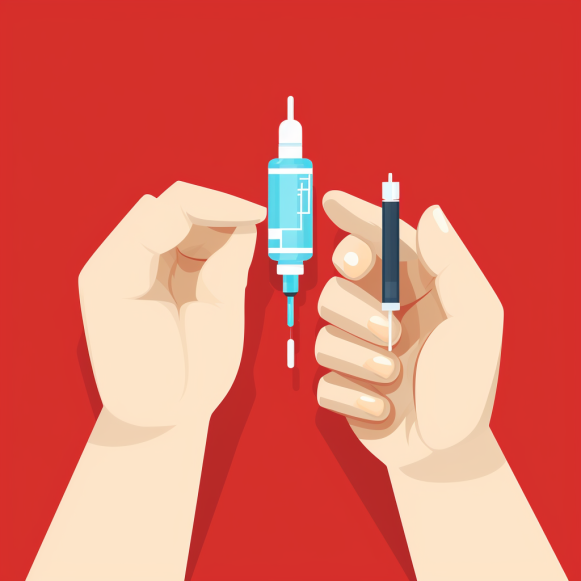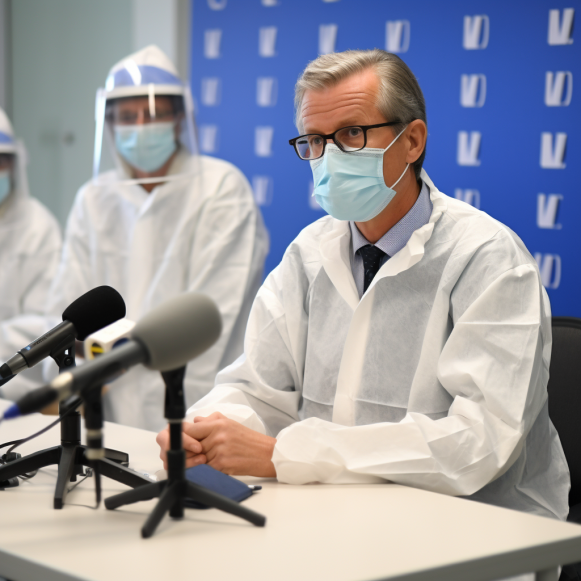Researchers Find COVID Vaccines Causally Linked to Increased Mortality, Estimate 17 Million Deaths

Data suggest COVID-19 vaccines haven’t saved lives, but instead, have resulted in 17 million deaths and increased all-cause mortality in 17 countries.
A new scientific report questions the idea that COVID-19 vaccines have stopped deaths. This is because researchers looked at all-cause mortality in 17 countries and found that COVID-19 vaccines didn’t help lower mortality rates. Researchers instead found that the third and fourth booster doses happened at the same time as the highest rates of death from all causes ever recorded in each country. This was especially true for older people at the time that the COVID-19 vaccines were made available.
The report, which was released on September 17 by Correlation Research in the Public Interest but hasn’t been reviewed by other experts yet, measured the vaccine-dose fatality rate (vDFR) for all ages. The vDFR is the ratio of deaths thought to be caused by vaccines to the number of vaccine doses given in a population. Researchers looked at death rates and found that vDFR injections killed one person out of every 800 times they were given, across all ages and countries. As of September 2, 2023, this means that 17.25 billion COVID-19 shots have caused deaths around the world.
“This would correspond to a mass iatrogenic event that killed (0.213 ± 0.006) percent of the world population (1 death per 470 living persons, in less than three years), and did not measurably prevent any deaths,” the authors stated. They discovered that the overall risk of death from COVID-19 vaccines is 1,000 times higher than what was previously thought based on data from clinical trials, monitoring of adverse events, and death certificates that show the cause of death.
The death rate from all causes for a group of people during a certain time period is called all-cause mortality. This is the most accurate information we have for finding and studying events that cause death and for figuring out how any rise or fall in deaths from any cause affects the whole population.
“All-cause mortality is a good feature to use in statistical medical analyses because it makes it clear whether someone has died or not,” an email from Stephanie Seneff, a senior research scientist at MIT, to The Epoch Times said. “It is very worrying that these authors have found a consistent trend among 17 countries showing a big rise in deaths from all causes happening at the same time that the COVID vaccine was widely distributed.” Their estimate that one person dies for every 800 injections given around the world is very scary.
Ms. Seneff said that her research into possible ways that vaccines can hurt people has made her think that it’s possible that these injections are “extremely toxic” and that regulatory agencies shouldn’t have approved them.
Key Findings
Researchers looked at death rates from all causes in 17 countries in the equatorial and southern hemispheres. These countries are: Australia, Argentina, Bolivia, Brazil, Chile, Colombia, Ecuador, Malaysia, New Zealand, Paraguay, Peru, the Philippines, Singapore, South Africa, Suriname, Thailand, and Uruguay. Since equatorial countries don’t have summer and winter, their all-cause mortality rates don’t change with the seasons.
With a vaccination rate of 1.91 shots per person of all ages, these countries are home to almost every COVID-19 vaccine product and manufacturer on four continents. They are home to 9.1 percent of the world’s population and 10.3 percent of all COVID-19 injections.
Some of the most important things that the 180-page report says are:
- Deaths from all causes went up in all of the countries that were looked at when COVID-19 vaccines were made available.
- After the World Health Organization declared the pandemic on March 11, 2020, until the start of the COVID-19 vaccination campaign, nine of the 17 countries did not have any extra deaths that could be found.
- Death rates from all causes reached all-time highs in January and February 2022, during the summer months in countries in the Southern Hemisphere. This happened at the same time or right after the start of booster shots in 15 of the 17 countries that were studied.
- In the 17 countries that were looked at, there were 1.74 million extra deaths from all causes during the vaccination period that started in January 2021. That’s one death for every 800 injections.
- The vDFR went up very quickly with age and reached almost 5% in people 90 years or older who got their fourth vaccine dose.
“There is no proof in the hard data of all-cause mortality that the COVID-19 vaccine rollouts have been helpful.” Denis Rancourt, co-director of Correlation Research in the Public Interest, told The Epoch Times in an email that no lives were saved.
“In fact, the evidence can be understood in terms of being exposed to something poisonous.” The chance of dying from an injection goes up by a factor of ten with age. “The policy of giving injections to older people first must end right away,” physics PhD candidate Mr. Rancourt wrote.
Peaks in All-Cause Mortality Coincide with Booster Doses
Researchers looked at death and vaccination data from Chile and Peru, breaking it down by age and number of doses. They saw clear peaks in all-cause mortality in July and August 2021, January and February 2022, and July and August 2022 for older age groups. In both countries, the rise in deaths from all causes seen in January and February 2022 happened at the same time as the quick rollout of the fourth COVID-19 vaccine dose in Chile and the third dose in Peru.
Researchers say it’s not likely that the rise in all-cause mortality (ACM) that happened at the same time as the rollout and continued use of COVID-19 vaccines in all 17 countries was caused by something other than the vaccines.
In Chile and Peru, the vDFR went up rapidly with age and was highest for the most recent booster doses. For people older than 90, one death happened for every 20 injections of the vaccine. This pattern looked a lot like data that the same researchers got in Australia.
The researchers wrote, “The many peaks in ACM (in 17 countries, on 4 continents, in all age groups of the elderly, at different times) and the rapid rollouts of booster shots allow this firm conclusion regarding causality and accurate quantification of COVID-19 vaccine toxicity.”
When data on age-adjusted death rates and vaccination rates for different age groups were available, the results in other countries were similar to those in Chile and Peru. In 15 countries with enough death records, there was a huge increase in deaths of all ages and from all causes in January or early February 2022. This happened at the same time as or right before the rapid rollout of the third or fourth booster doses, depending on the country, and the continued administration of doses that were not boosters.
Researchers Found No Evidence COVID-19 Vaccines Improved Mortality
The researchers said that their results are clear-cut and that the connections they saw are many and well-organized. They couldn’t find a single case that showed COVID-19 vaccines made all-cause mortality worse.
“If vaccines stopped the spread of infection, serious illness, or transmission, then death rates should go down after vaccine rollouts, not up, as seen in every group of elderly people who were given rapid booster shots.” The researchers wrote, “And death rates wouldn’t just go up when vaccines are rolled out; we have shown here in nine countries on three continents that there is no extra death rate before vaccine rollouts.”
The report says that data from many countries, including India, Australia, Canada, Israel, and the US, show the same thing: deaths from all causes peaking at strange times around the time of booster shots. In the US, most of the deaths happened in people aged 25 to 64 in 21 states. This happened at the same time that regulatory agencies started their “vaccine equity” campaigns, which led to a “rapid surge” in the number of vaccines given. Researchers think that the United States had about 160,000 extra deaths during a time when more than 60 million doses of the COVID-19 vaccine were given.
Potential Limitations
It is important to remember that the scientific report has not yet been looked over by other scientists. When an article is finally accepted by peer review, it is often revised before it is published, which shows that it could be better. Peer review is the process of judging submissions to an academic journal. Results are checked by a group of experts using strict criteria before they are accepted for publication.






